Sweater Quantity Yardage: With or Without a Pattern in Mind
Some of us start our knitting journey with sweaters, while others build up to them slowly, beginning with smaller, more forgiving projects like shawls or mittens. However you get into garment knitting, most of us have faced the same issue at some point, ending up short a skein (or two), or buying far more yarn than needed. So why is it so tricky to figure out a sweater quantity of yarn to buy? How do we estimate the right amount for a project, especially when we don’t have a pattern in mind?
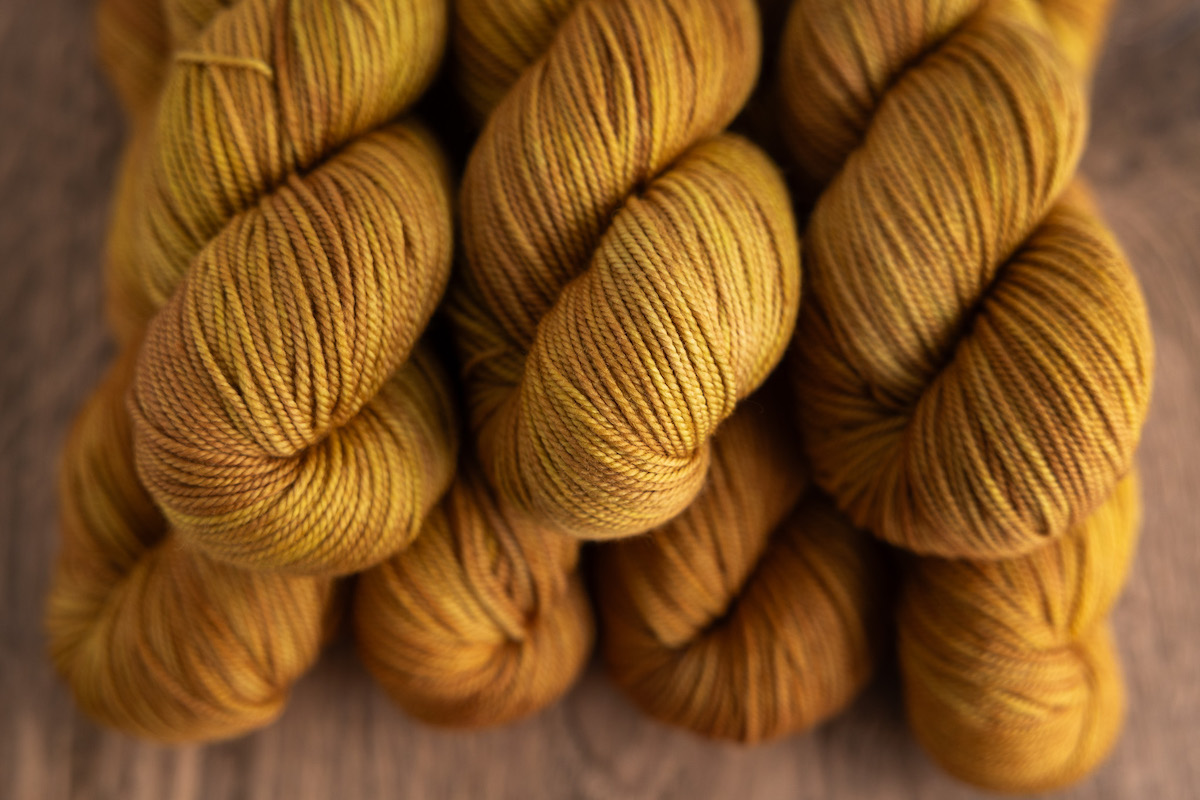
In this article, we’ll walk through how to read yardage requirements in patterns, understand why the yarn structure matters, swatching, and guide you in making educated guesses when purchasing yarn in larger amounts, whether you have a specific pattern in mind or not.
What Does the Pattern Call For?
Today’s knitting patterns are becoming increasingly inclusive, offering a wide range of sizes and fit options. That said, covering every possible variation would be too much for one article. For simplicity, let’s imagine a pattern that comes in three sizes, and we’ll include a few examples to help you determine your own yardage needs.
Understanding Recommended Ease
One of the first things to check in a pattern is the recommended ease. Ease refers to how close (negative ease) or loose (positive ease) the garment is on your body. For example, if the designer suggests 4 to 6 inches of positive ease, and your upper chest measures 40 inches, you’ll want to choose a size that finishes between 44 and 46 inches. If the sizes listed are 40, 45, and 50 inches, the 45-inch size is likely your best match.
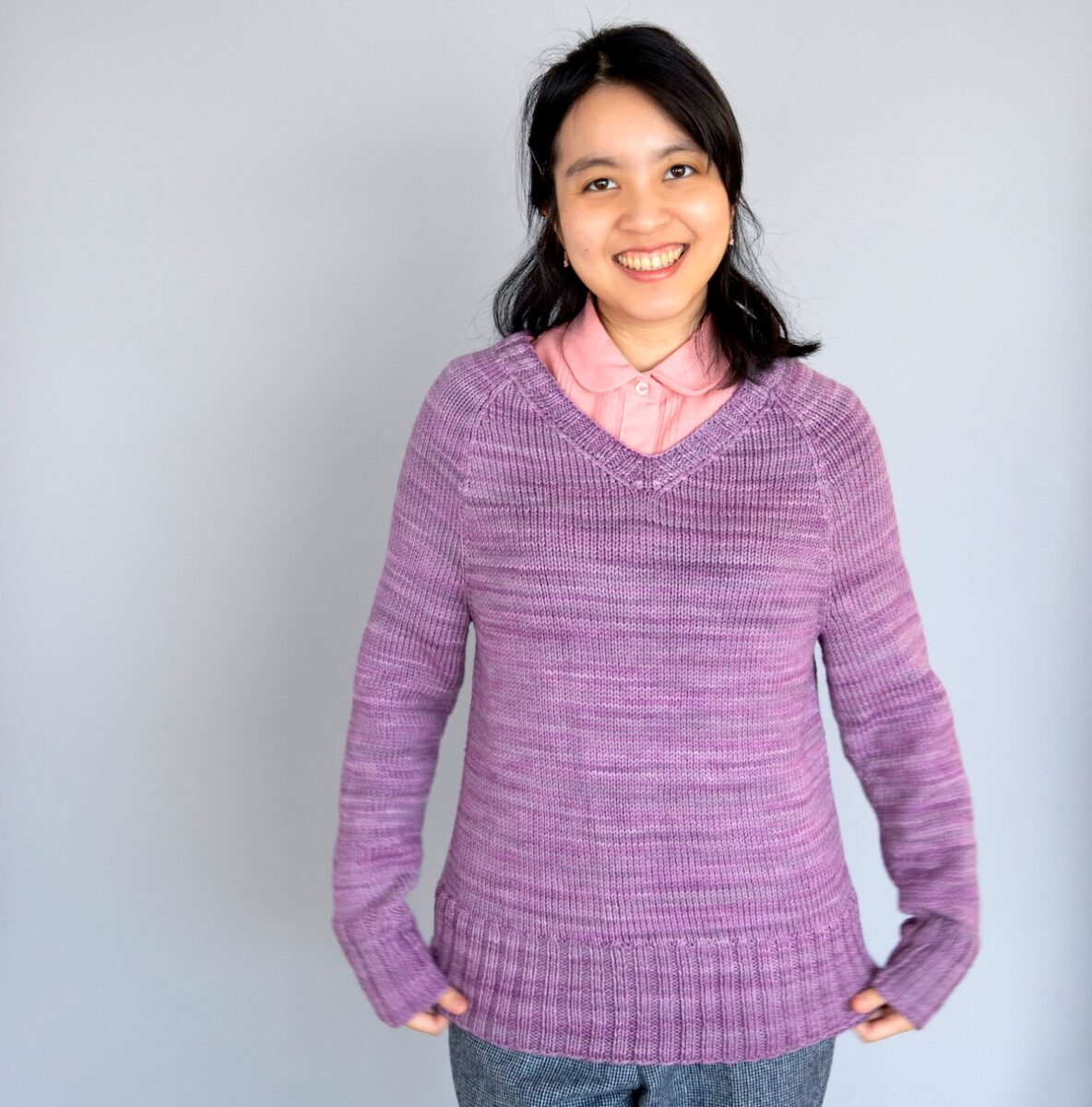
If you fall between sizes, say you want a 44-inch finished size, but the pattern offers 43 and 45 inches, you’ll need to decide whether you prefer a closer or looser fit. Fortunately, the difference in yardage between two adjacent sizes is usually minimal, so this choice likely won’t have a huge impact on how much yarn you need. But, in reality, this difference could be bigger, resulting in more yarn, so this may be a spot where you need to decide on fit.
We offer two amazing courses in the School of SweetGeorgia with Tabetha Hedrick on knitting your first garment and fit: Perfect Fit and Knitting Your First Sweater.
Same Yarn or Something Different?
Next, take a close look at the recommended yarn yardage in the pattern. Even within the same weight category, yarns can vary a lot in yardage. One fingering weight skein might have 400 yards, while another could have 480 yards. That difference, multiplied over several skeins, adds up quickly.
The style of yarn matters too. A smooth, superwash yarn might require a tighter gauge, while a woollen-spun yarn can often be knit more loosely, which uses less yarn. This is one reason mohair is so popular: it creates a soft halo that fills in gaps, offering good coverage with fewer yards.
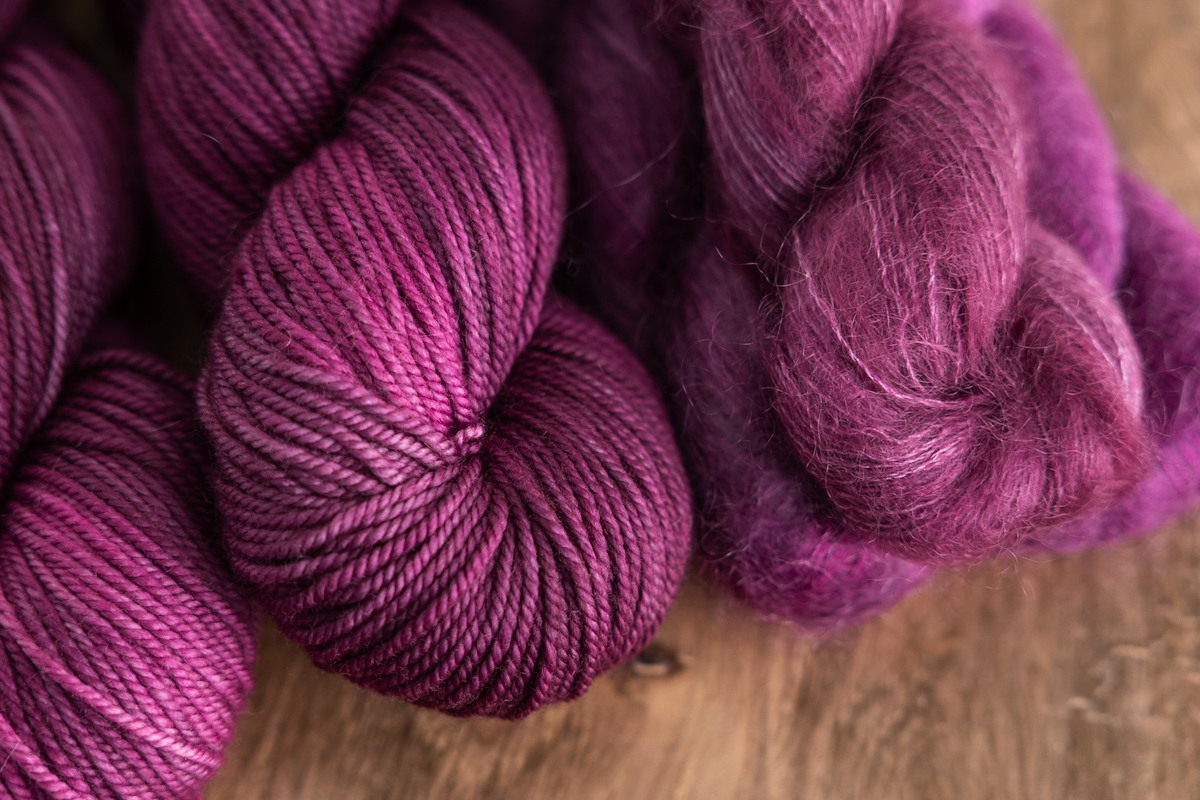
Katrina Stewart has written an excellent series on understanding your yarns. She explains how fibre preparation, yarn construction, and ply structure affect everything from yardage to drape. Her insights can help you make easy yarn substitutions and understand why a particular yarn behaves the way it does in your project.
- Understanding Yarns Plies For Knitters & Crocheters
- Worsted vs Woollen Spun Yarns: The Yarn-Making Process
- Seamlessly Substitute Yarns for Any Knit or Crochet Project!
Fibre Content Matters
What fibre content is called for? Wool yarn? Silk yarn? A blend? Now, we usually buy yarn in 100-gram skeins, but here’s the thing: different fibres have different weights. So, even if you have a cotton skein and a wool skein that both weigh 100 grams, they won’t give you the same amount of yardage.
We offer a series of articles about knitting (and crocheting) with various types of fibre. Each acts differently when knitted into fabric, and a swatch can help demystify the fibre’s characteristics.
- Knitting & Crocheting with Wool
- Knitting & Crocheting with Silk
- Knitting & Crocheting with Camelids
- Knit & Crochet with Goat (and Rare) Yarns
Gauge Swatching
We know… swatching isn’t always the most exciting part. It’s tempting to dive right in. But your knitting tension really matters. Tighter knitters use more yarn because the stitches are denser, while looser knitters use less.
Let’s say you swap the recommended yarn for a smooth superwash and knit a swatch. You might find you don’t like the fabric and need to change needle size to make the fabric more appealing, resulting in a tighter fabric that uses more yarn than the original woollen-spun recommendation. This not only changes the fabric and gauge but might require you to knit a different size, and with the new gauge, the recommended yardage won’t work out.
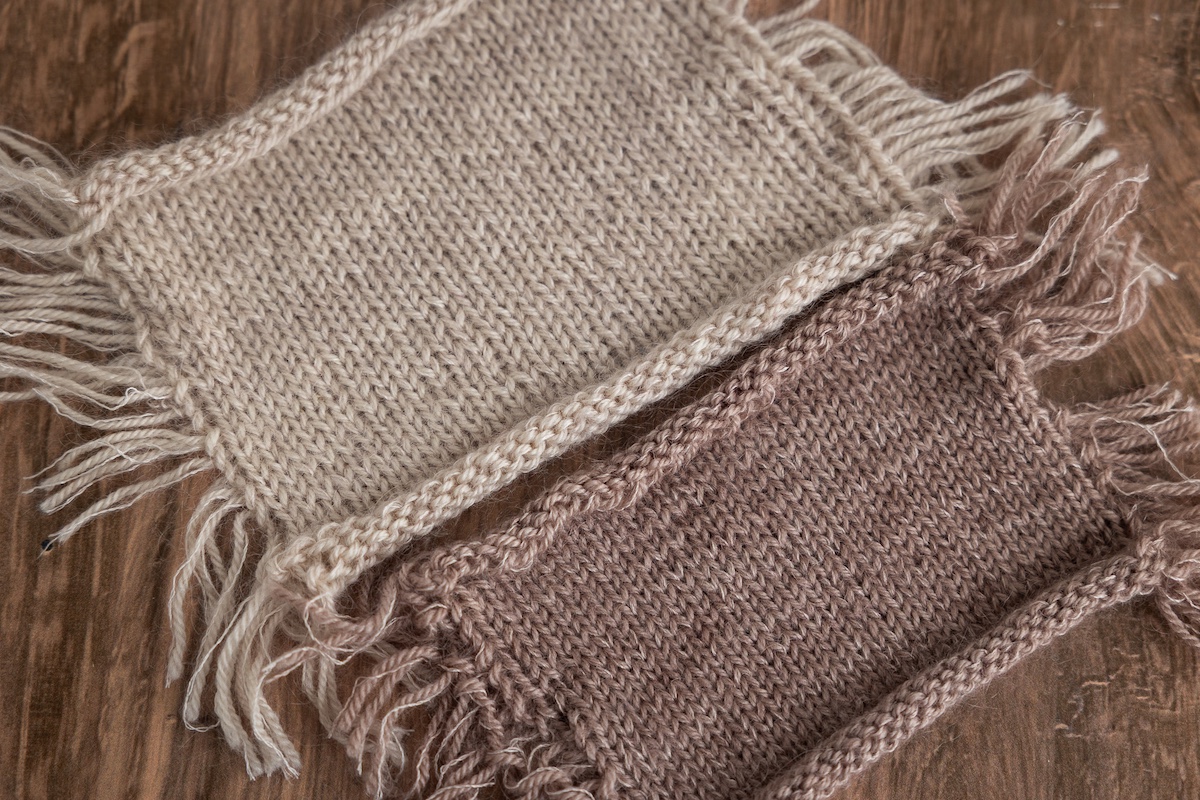
Top swatch knit using US 7 / 4.5mm needles, bottom swatch using US 3 / 3.25mm needles.
Also, if you’re substituting yarns, it’s a good idea to buy an extra skein to allow for swatching. Most patterns include yardage for a couple of 6 x 6-inch swatches, but not all do. That one additional skein gives you the freedom to test and feel confident in your final choice
If you need to brush up on how to read your gauge, Understanding Knitting Gauge Swatches is an excellent free article. For a deeper five, explore our Mastering Gauge course at the School of SweetGeorgia.
Stitch Pattern Matters
Not all stitch patterns use the same amount of yarn. Stockinette usually requires less yardage than garter stitch or cables, and lace can use even less yarn. Over time, you’ll start to recognize which fabrics are more yarn-hungry, especially as you study different patterns and see the trends.
What If You Don’t Have a Pattern in Mind?
There are steps you can take before buying a large sweater quantity of yarn, even if you don’t know what you’ll knit yet. Maybe you’re at a fibre festival and fall in love with a limited-edition colourway or find something special on vacation that you can’t order online. Having some background knowledge can help you make a more confident choice.
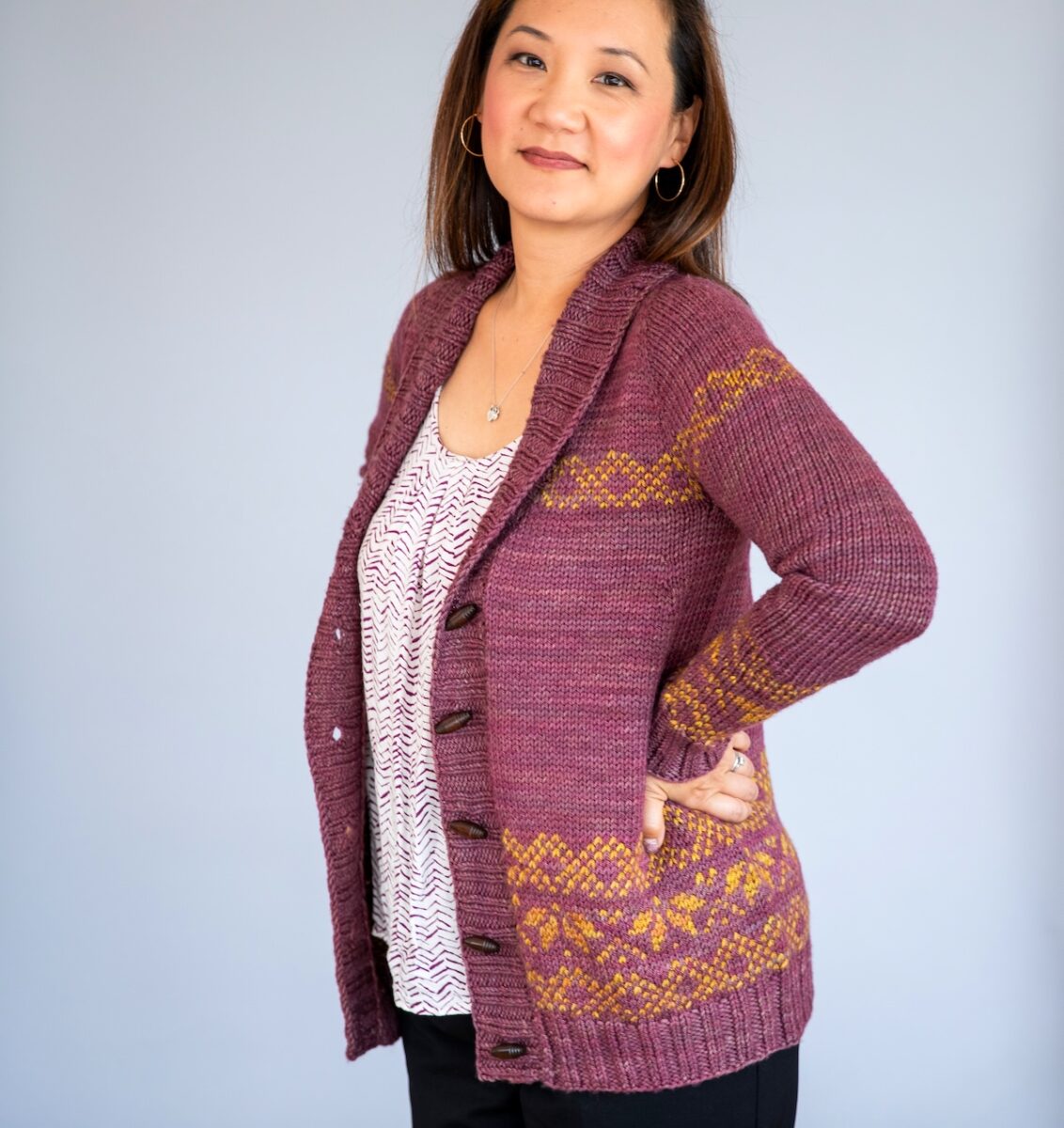
Learn About the Yarn
As mentioned earlier, Katrina’s articles offer a strong foundation in how yarns behave. The more you know about the yarn’s structure, the better you’ll understand how it might work in a garment.
Also, many spinners sample new fibres to see how they perform; knitters can do the same. Try buying single skeins of different yarns and knitting swatches at various gauges. This helps you build your own reference library, just like Amanda and Ruth do in their articles, How to Create a Gauge Library and Building a Library of Samples and Swatches.
Study Similar Patterns for Yardage
Even without a pattern, you can look up several sweater designs to get a general idea of the quantity of yarn typically needed. Try searching by garment type (for example, cardigans) on Ravelry or a designer’s website. Write down the yardage requirements for your approximate size, and note whether the pattern includes cables, lace, or other stitch details that affect yardage.
Also, compare different yarn weights. You might see that you tend to need around 1600 yards of yarn for a stockinette pullover. A fingering weight pullover may only need 4 skeins to get this yardage, while an aran weight one could require 8 skeins. And remember, yarn style plays a role too.
Ravelry’s project pages are especially helpful. Look up the yarn, filter for garments, and see how much others have used for similar projects in your size range. Over time, you’ll start to feel more comfortable estimating how much yarn to buy.
Bringing It All Together
Even without a pattern, your knowledge of yarn and patterns can guide you. But here are a few final considerations to help you make your best guess.
Modifications
If you know you’ll want to lengthen or crop the pattern, that will change your yardage needs. A few extra rows won’t matter much, but a few inches will. When in doubt, add a skein.
Between Sizes
If you fall between sizes and haven’t worked with the yarn before, order that extra skein. It’s a small cost for peace of mind.
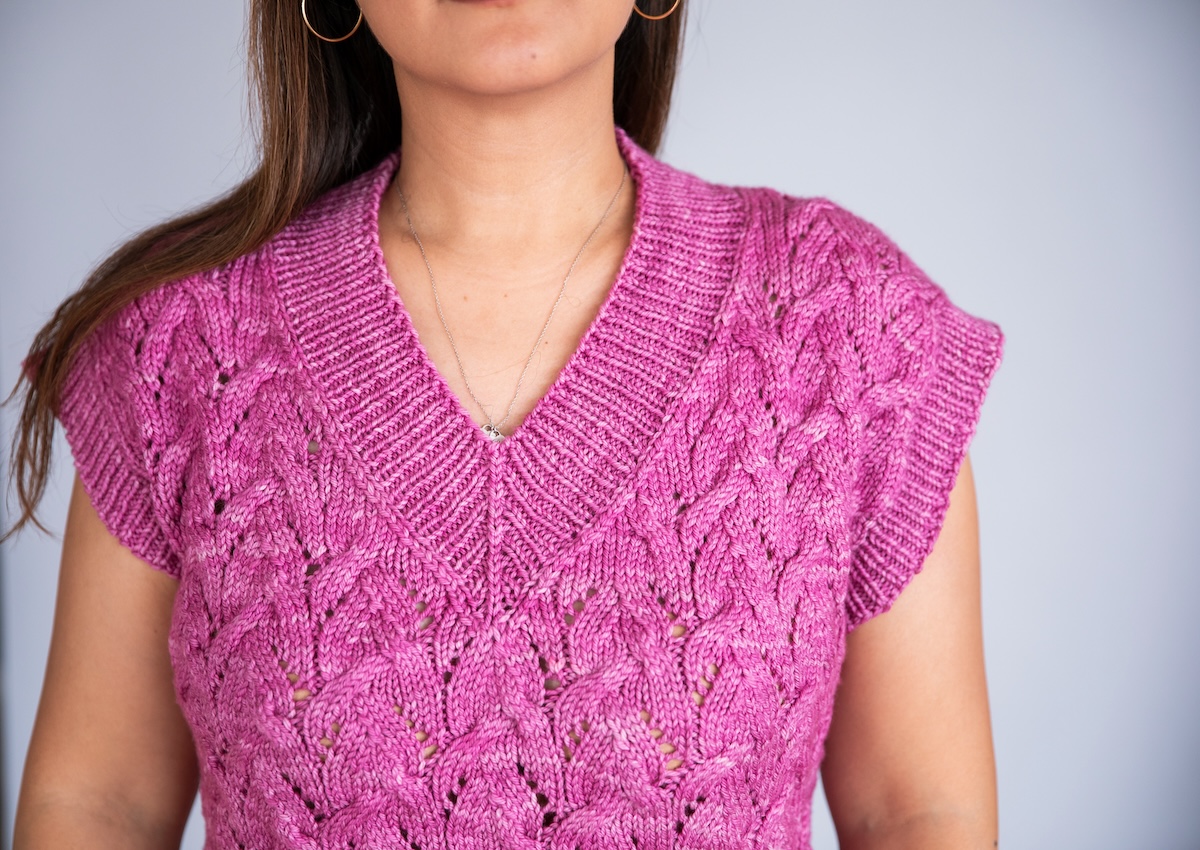
Can You Pivot Your Plans?
Sometimes you buy a sweater quantity, but it turns out to be just shy of enough. Can you use a contrast colour for collar bands or cuffs? Add stripes? Maybe you can shift the fit or construction slightly.
For example, in a top-down sweater, you could knit the sleeves first. That way, if you run out of yarn, you’ll still have a cropped sweater with full sleeves. Or vice versa, finish the body first and adjust the sleeve length later. Being flexible can make all the difference.
You can also unravel those gauge swatches if you need just a few more yards.
Sweater Quantity Conclusion
Buying a sweater quantity of yarn, especially without a specific plan, can feel like a big decision. But with a little preparation, a willingness to experiment, and an understanding of how yarn behaves, you’ll be well on your way to making confident yarn choices, pattern or no pattern.
We Love Make-Alongs!
There’s something special about creating together. These events are a chance to stay connected, inspired, and supported. In August, we have a two-month Sweater Weather knit-along for colourwork sweaters, featuring two patterns available for free to our School of SweetGeorgia members, each pattern paired with a course to help you with your stranded colourwork success. You can also purchase the stand-alone patterns, without the courses, in our SweetGeorgia shop.
The Falling Leaves Pullover by Andrea Rangel
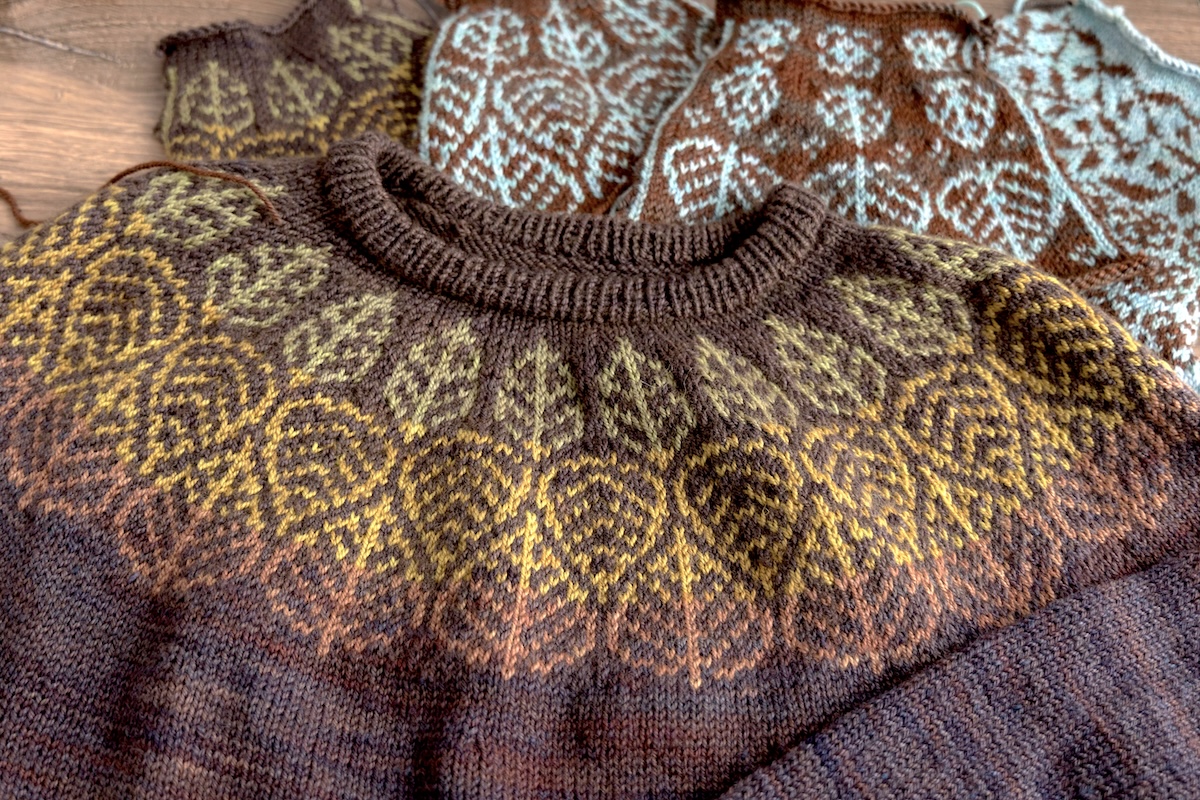
Just looking at this sweater causes a long inhale, like trying to breathe in the smell of pumpkin spice or the crisp autumn air. The Falling Leaves Pullover is worked from the bottom-up and is featured in Andrea Rangel’s Design Stranded Colourwork: Sweaters course. This is her second course with us, building on the skills taught in Design Stranded Colourwork: Hats. In both, Andrea shares her thoughtful approach to designing colourwork motifs, considering fit, using spreadsheets, and drafting complete pattern instructions. Each lesson blends creativity with technique, guiding us to design with confidence.
O’Deery Me Pullover by Caitlin Shepherd
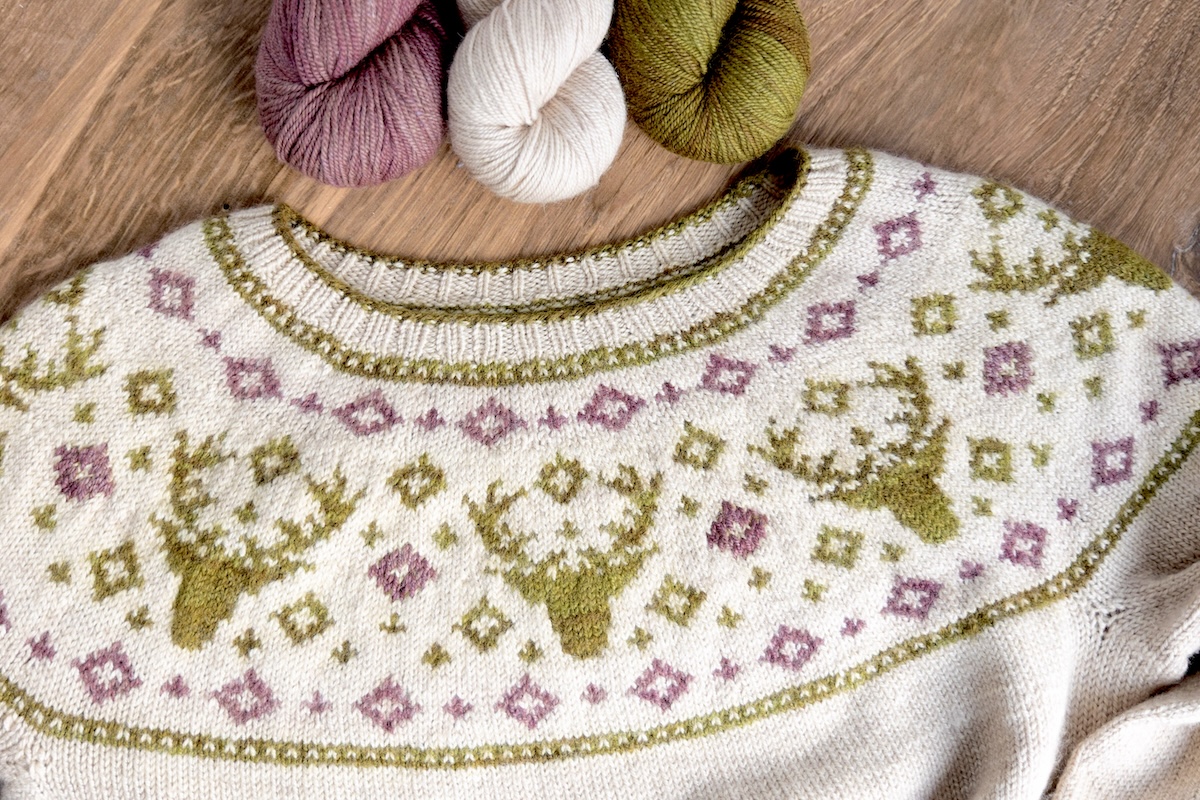
Caitlin Shepherd’s O’Deery Me Pullover is a whimsically top-down design inspired by the charming motifs of her Deery Me Mittens. Both are charming and magical, with a touch of holiday inspiration! Both patterns are taught within her SweetGeorgia courses: Stranded Colourwork Sweater and Stranded Colourwork Mittens. Caitlin walks us through each step with care, offering tips, insights, and steady encouragement as you knit alongside her pattern and fellow members of the school.
If you’re a spinner, you might want to spin the yarn for your colourwork yoke and pick up the main colour yarn for the body of your sweater. We shared an article last week, Spinning Colour! Possibilities for Stranded Colourwork Sweaters, full of inspiration on how to spin for colourwork, and there’s a fibre sale on now through June 17th. We’d love to have you knit (and spin) along with us.
The post Sweater Quantity Yardage: With or Without a Pattern in Mind appeared first on SweetGeorgia Yarns.
Comments
Post a Comment